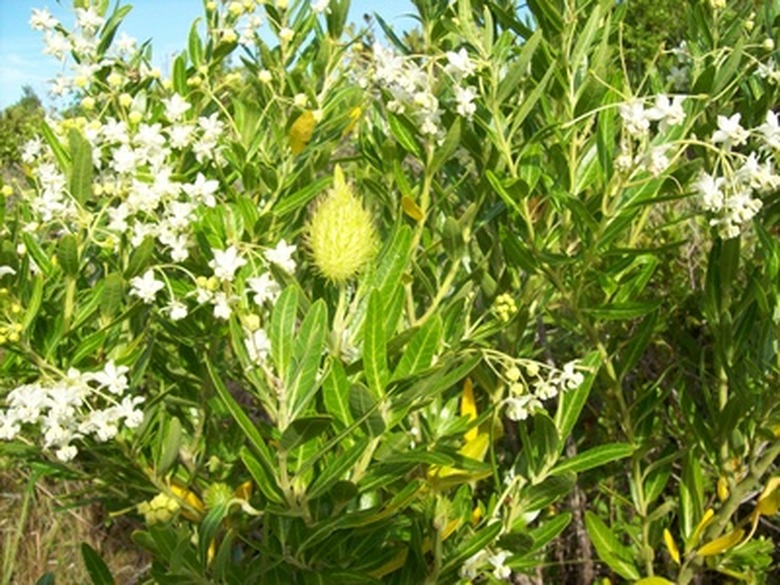Willow Shrub Identification
Willows are generally associated with the weeping willow, which is a massive tree known for its invasive roots. Although the weeping willow has a bad reputation for taking over other plants and causing damage to septic tanks and sewer lines, it represents only a few invasive willow species. Willow shrubs are grown more for their colorful buds, catkins and contorted shapes, notes the Bark and Bloom website. Because willow shrubs are smaller than trees, they're more manageable.
Identification
Willow shrubs have thin, long leaves. Carefully noticing details of a plant sometimes helps in identifying a particular willow species, says Michigan State University Extension's Upper Peninsula Tree Identification site. For example, the leaves of a pussy willow (Salix discolor) alternate on the stem and are simple with margins that are totally irregularly and coarsely toothed. Undersides of a pussy willow are white, according to the University of Wisconsin's Cofrin's Center for Biodiversity. Willows lack true terminal buds and their side buds are often pressed closely to the twig, according to Uptreeid.
- Willows are generally associated with the weeping willow, which is a massive tree known for its invasive roots.
Size and Geography
There are more willow shrubs than willow trees. Although, there are more than 300 species of willows worldwide, only 38 of them ever grow as large as tree size. Willows are mostly located in the northern hemisphere. They grow in temperate regions with about 120 species found in North America.
Willow Flowers
Willows flowers are borne in clusters known as catkins. The appearance of willow catkins is a sign spring has arrived. They lack petals and are dioecious, according to University of Wisconsin's Center for Biodiversity. This means each flower has only female or male parts, rather than containing both on the same flower.
- There are more willow shrubs than willow trees.
- Although, there are more than 300 species of willows worldwide, only 38 of them ever grow as large as tree size.
Types
The black willow is identified by its yellow twigs. Black willows have leaves that are 3 to 6 inches long, but only 6 inches wide, notes MSU Extension. They have leaves with rounded bases and bright yellow twigs can be spotted even while driving along a highway.
The dappled willow has bright pink shoots that open up to green and creamy-white variegated leaves, according to Washington State University Extension. The shrub's leaves turn yellow in fall and its limbs grow in a weeping pattern. Twig growth is bright red in winter.
Bobb's willow is a tall shrub with gray, broken bark. It can appear dead in winter because of its scrubby form. Its leaves, which are coarse and toothed, are wider than most willow foliage.
- The black willow is identified by its yellow twigs.
- The shrub's leaves turn yellow in fall and its limbs grow in a weeping pattern.
Benefits
Although a willow's wood is light and soft, it's also tough and doesn't splinter, making it useful for making items such as tool handles, steamer paddlers and artificial limbs, according to Kibsey Craft. The bark from a white willow shrub contains a chemical known as salicin, which is similar to aspirin and used for relieving pain. In fact, salicin was used to make aspirin in the 1800s, according to the University of Maryland Medical Center website.
